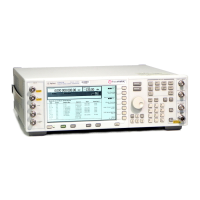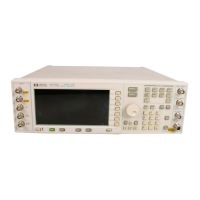4
www.agilent.com/find/esg
This section provides a quick review of key Bluetooth signal characteristics. Additional
information about the Bluetooth signal structure can be found in the Bluetooth
System Specification.
Bluetooth modulation and transmission parameters
Modulation parameters
Modulation type FSK – frequency shift keying
Baseband filtering Gaussian, BT = 0.5
Maximum frequency deviation 140 – 175 kHz
Modulation index 0.28 – 0.35
Symbol rate 1 Msymbol/second
Transmission parameters
Frequency band 2.4 GHz ISM band
Transmission scheme TDD – time division duplex
Spreading type FHSS – frequency hopping spread spectrum
Number of channels 79
Channel spacing 1 MHz [(f = 2.402 + k) GHz, k = 0,1,2,…78]
Hop rate 1600 hops/second
Bluetooth transmission scheme
Time-division duplex
In Bluetooth systems, master and slave devices exchange information by alternating
packet transmissions in time-division duplex, Figure 1. The master starts its transmission
in even-numbered time slots only, and the slave starts its transmission in odd-numbered
timeslots only.
Figure 1. Bluetooth time-division duplex transmission scheme.
Frequency hopping
In normal operation, Bluetooth devices typically hop to a new carrier frequency each
timeslot. However, when performing the majority of transmitter and receiver tests as
indicated in the Bluetooth RF Test Specification, frequency hopping is disabled.
Signal Structure

